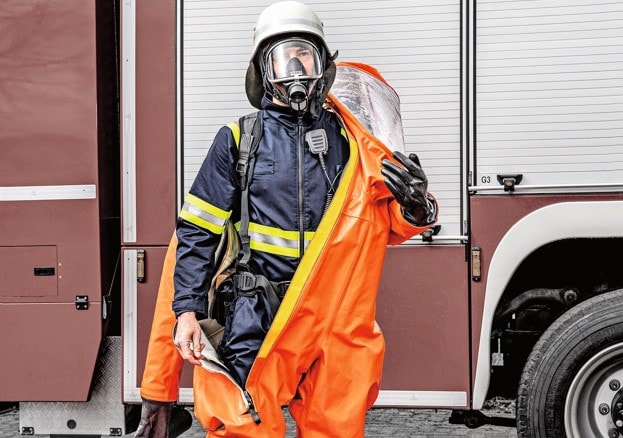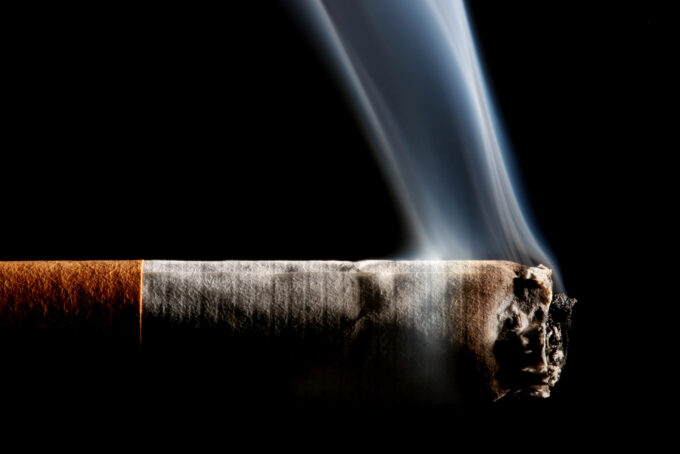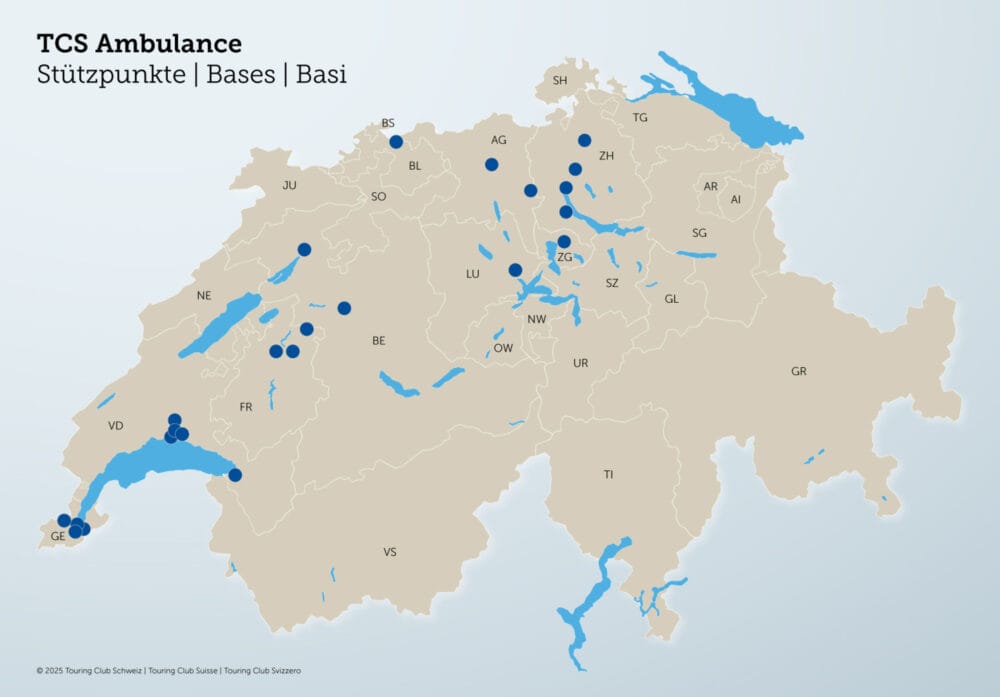Contaminated PPE: After the use is before the use
Proper handling of contaminated PPE does not begin in the laundry or respiratory protection workshop. The equipment must be correctly discarded, packaged, transported and reprocessed after use. This is the only way to ensure the safety of the emergency forces.

Fire extinguished - mission completed?! By now, everyone is aware that this is not the case. After the operation, the work continues, because contaminated PPE must be properly stripped and prepared for the next steps. Here, as with firefighting operations, expertise and special care are required. Adhering chemicals and toxic substances can be inhaled and absorbed through the skin even after the fire.
Operational hygiene is an issue that concerns all fire departments alike. Just last summer, the International Agency for Research on Cancer (IARC), an agency of the World Health Organization (WHO), classified firefighting work as carcinogenic - another warning signal and a call to action. After all, in many places there is a need to catch up in the areas of personal equipment, the cleaning of protective clothing for firefighters and ultimately the hygiene of the deployment site.
Hygiene concepts
Currently, many fire departments are in the process of developing and implementing appropriate operational hygiene concepts. It is important to train firefighters on the subject. Younger and new firefighters in particular should be informed about proper behavior during training and their first assignments so that a change in behavior can be achieved. Specialists offer support in the form of training, instructions and products. For example, a hygiene set for PPE available on the market makes it easier for emergency personnel to hygienically discard and pack contaminated protective equipment.
Also worth mentioning is a change of clothing overall that is designed so that firefighters can continue to be deployed at the scene of the incident after respiratory protection has been used and the contaminated clothing has been packed, for example, to dismantle operational components such as hoses. Another supplier provides decontamination showers and tents that make it possible to change clothes and shower while still at the deployment site.
Once the contaminated protective equipment (clothing and PPE such as respirators, masks, etc.) has been properly removed and discarded after extinguishing at the scene of the incident, it must be packed in an airtight container. Transport to the laundry or respiratory protection workshop should be carried out separately from the emergency personnel so that no one comes into contact with the toxic substances and gases. This is the only way to prevent contamination from spreading. The German Social Accident Insurance (DGUV) advises using PPE with light-colored outer fabric, because this makes contamination and cleaning successes more visible.
Separate clothing should be available to emergency personnel for the return trip to the station. If possible, hands, face and arms should be washed at the scene of the incident. No hazardous substances should be allowed to enter the crew cabins.
Proper cleaning
Cleaning and reprocessing of PPE are also increasingly becoming the focus of fire departments. "After all, if cleaned and cared for incorrectly or improperly, even the safest protective clothing can become unsafe," says Tobias Thoren of Isotemp, which is why PPE manufacturers provide their products with labels that include references to cleaning and care instructions. Instructions for use can also be found on company websites.
Those who do their own laundry must ensure that flame protective clothing is maintained separately from other clothing. Heat protective suits including viewing windows can be brushed or rubbed off. Chemical protective suits can be hand or machine washed and disinfected. During machine cleaning and disinfection, viewing windows must be particularly protected against damage. Appropriate accessories are also provided by the manufacturers. Contamination protection must be separated and maintained in such a way that the flame-retardant and antistatic properties are retained. It must be re-impregnated after each wash.
A visual inspection should be performed after each wash to check materials, seams, zippers and sealing cuffs. If damage is detected, repairs can be implemented by certified partners or directly by the manufacturer. As a rule, this does not take 14 days.
Attention, CSA cleaning!
The chemical protective suit (CSA) manufacturer Tesimax recommends using specially developed washing and disinfecting agents for coarse decontamination and cleaning and only having the CSA carried out by the manufacturer or by certified service partners after customer training/instruction has been completed. Only then can the optimum cleaning effect take place while protecting the equipment and reprocessing take place properly.
Up to 50 industrial washes
Together with the customer, options are also developed for easy and hygienic reprocessing of the PPE. For example, in the case of safety goggles, there is the option of complete disinfection thanks to special coatings.
Finally, it's about the reusability of the equipment. High-quality clothing can withstand up to 50 industrial washes without changing function or appearance. This is in the interest of fire departments and nature. Because protective equipment that is worn for a long time is also a contribution to sustainability.
Author: Kirsten Rein, freelance trade journalist, Frankfurt a. M.. The article was written on behalf of the world's leading trade fair A+A for safe and healthy working, Messe Düsseldorf.
A+A in Düsseldorf
A+A, the international trade fair and congress for safe and healthy work, will be held in Düsseldorf from October 24 to 27. Around 2,000 exhibitors will present their products and solutions for personal protective equipment (PPE), operational fire, environmental or disaster protection to offers for ergonomic and healthy workplace design.
This year's leading trade show will also be accompanied by a congress. It takes up the topics of digitization and sustainability and presents national and global advances. These include prevention strategies such as the Joint German Occupational Safety and Health Strategy (GDA) and "Vision Zero". Furthermore, occupational science findings of application-oriented research will be presented and discussed. The Wearracon Europe conference on exoskeleton technology in cooperation with the "Exoworkathlon Life" study will ensure optimal synergies and new findings during the congress in a thematically coordinated manner. Furthermore, the event offers all users, operational stakeholders, consulting professionals and occupational physicians a lively and innovative platform for high-quality prevention knowledge, write the organizers.









